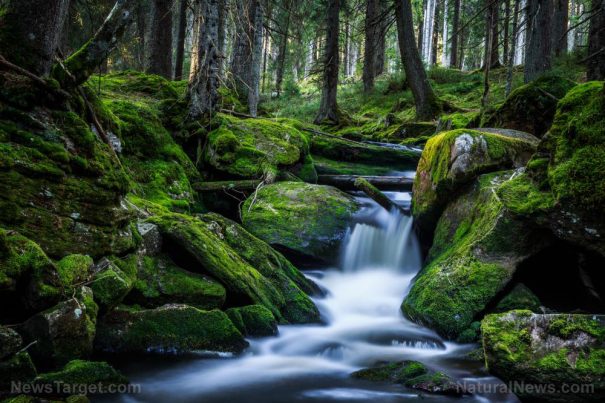Debunking some of the most common water survival myths
Tuesday, November 06, 2018 by Michelle Simmons
http://www.bugout.news/2018-11-06-debunking-some-of-the-most-common-water-survival-myths.html

Water is one of the most important items you will need for survival, but it is often the first thing that everyone runs out of. Drinking water in the wilderness may also be challenging because people continue to follow dangerous water survival myths — and this article aims to debunk them. (h/t to PreppersWill.com)
- Water from a clear, running source is safe for drinking: Some people seem to think that if water flows, it is safe to drink. But bacteria, viruses, and other harmful parasites can hide even in the most crystal clear waters. You should purify the water first before drinking, or else you could end up with diarrhea, vomiting, and nausea – symptoms that you need to avoid during a survival situation because they can cause the whole body to shut down. The water you use for washing your face should also be purified first. Always carry a water filter, water purification tablets, or iodine pills with you.
- Water from natural depressions is safe to drink: In a survival scenario, safety is your priority, especially if you do not know when rescue will arrive. Believing that drinking water from natural depressions is ideal is one way to cut your chances of survival. All water should be treated first before drinking. You can kill most microorganisms by boiling the water. If you have a metal canteen can, place it directly into an open fire while cooking. However, if you have plastic ones, you have to use an indirect heat cooking method, such as rock boiling. With this technique, you need rocks that will fit your container, but will still have enough room for water or food. Do not use rocks that have water trapped in them because these can explode when heated. Heat the rocks for one to two hours, then put them into your container to boil the water. Change the rocks frequently to keep an even boil.
- Drinking water from plants is safe: Many movies portray that drinking water from a cactus is safe, but in reality, it is not. This is actually dangerous because the liquid inside a cactus is not water, but a highly alkaline, deadly fluid. Unless you are an expert in cacti botany, do not drink from a cactus. Drinking from a cactus may make you sick and vomit, which will make you dehydrated faster. Research about foraging and discover which plants are safe for consumption in your area if you really want to drink from various plants. (Related: How to find water sources in the wild like a pro.)
- Drinking a small amount of seawater will keep you going: No matter how thirsty you are, do not drink seawater because it makes you even more dehydrated. You will die faster from drinking seawater than not drinking water at all. The salt content of seawater cannot be processed by the human body. For the kidneys to eliminate all the excess salt taken in by drinking seawater, you have to urinate more water than you drank. Eventually, you get thirstier and will more likely die due to dehydration.
- Eating snow and drinking water are the same: Snow can only rehydrate you safely if you boil it in a container. Eating snow can make you more dehydrated and cause hypothermia because the body needs plenty of energy to heat and melt the snow. Snow has also caught pollutants in the atmosphere, such as black carbon, as it fell through the sky.
- Urine is safe to drink: Contrary to this belief, urine is not safe to drink as it contains the body’s waste products and the urine of a dehydrated person is loaded with more waste products.
- Drinking water is not a problem with a water filter: Drinking water is not a problem with a water filter only if you can find a water source and will stay near the source at all times. In case you’d have to travel long distances, you need alternatives because there’s no guarantee that you will find a water source again. Instead, bring a small water filter and a container for you to carry water anywhere you go. There are also water canteens that can also purify water.
In addition, never drink blood, fish juices, alcohol, and fresh sea ice no matter how thirsty you are.
Sources include:
Tagged Under: Tags: bug out, dehydration, finding water, how-to, hydration, off grid, outdoor skills, preparedness, prepper, prepping, self-reliance, survival, survival skills, survivalist, water, water purification, water sources, Wild, wilderness

